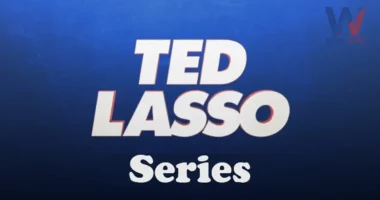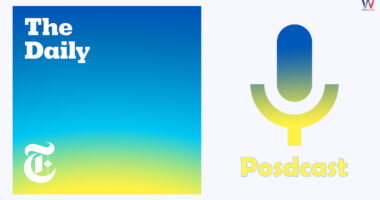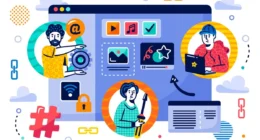Table of Contents
If you’re new to producing music, picking the best beat making software (aka DAWdigital audio workstation) can feel overwhelming. To help you find the right fit, this article walks through the ten best options made for beginners in 2025. We discuss why they stand out, what makes them easy to use and which one suits your style and setup.
Best Beat Making Softwares
FL Studio
No beginner list is complete without FL Studio. With its iconic step sequencer and loop-friendly interface, it’s a favorite for hip hop, EDM and more. Beginners love its clear layout drag, drop, sequence, and play. It’s packed with built-in synths, effects and free lifetime updates. The learning curve is gentle, although the interface can feel different from other DAWs.
Pros: Lifetime updates, intuitive beat making, great stock tools.
Cons: Workflow differs from linear DAWs.
Ableton Live
Ableton Live doubles as a performance instrument and production studio. Its Session View is perfect for experimenting with loops and building arrangements promptly. Live is intuitive, supported by strong stock synths and effects.The Intro or Standard edition is a cost-effective choice for beginners.
Pros: Loop-based creativity, live performance features, beginner-friendly.
Cons: Full version can get pricey.
GarageBand
Mac and iOS users, meet GarageBand Apple’s free, polished entry point to making beats. It supports up to 255 tracks, offers instruments preset, MIDI editing and pitch correction. When you’re ready to step up, you can seamlessly upgrade to Logic Pro X.
Pros: Free, easy to use, high-quality tools.
Cons: Apple only, less advanced than pro DAWs.
Magix Music Maker Free
On Windows, Magix Music Maker Free is a straightforward, drag and drop beatmaker with a rich sound library. No steep menus just pick your loops, drag them in and get creating.
Pros: No cost, large loop library, simple interface.
Cons: Limited compared to paid DAWs.
Cakewalk by BandLab
Previously known as SONAR, Cakewalk by Band Lab is now a completely free, professional-grade DAW for Windows. It offers multi-track recording, mixing, mastering and plugin support, all without paying a cent.
Pros: Full-featured, powerful mixing, free.
Cons: Windows only.
LMMS
LMMS is a free, open-source DAW designed for beatmakers and works smoothly across Windows, Mac, and Linux platforms. It includes a beat/bassline editor, piano roll, FX mixer and synthesizers packed in. Everything is free and customizable.
Pros: Multi-OS, free open source, great basic tools.
Cons: UI isn’t as polished as commercial software.
Bitwig Studio
Bitwig Studio offers a sleek and versatile music production setup compatible with Windows, Mac and Linux. It supports both traditional track-based editing and modular clip-based workflows. Known for its powerful modulation features and flexibility, Bitwig stands out though it comes at a higher price compared to free alternatives.
Pros: Cross platform, powerful modulation, flexible workflow.
Cons: Higher price, more advanced features to learn.
Waveform Free
Waveform Free (formerly Tracktion T7) offers a professional-feeling DAW with a single-screen design and full plugin support. It scales well, making it ideal for beginners to grow into.
Pros: Free, intuitive one-screen layout, VST/AU support.
Cons: May feel limited once you go pro.
SoundBridge
SoundBridge is a user-focused DAW on Windows and Mac, offering touchscreen support, built-in plugins, and a free sound library. Their learning platform and tutorials make it easy to pick up skills quickly.
Pros: Easy interface, demos & tutorials, free version.
Cons: Advanced features require upgrade.
BandLab (Online DAW)
Lastly, BandLab is a browser-based, free DAW that works on Windows, Mac, Linux, iOS and Android. It supports beatmaking, recording, collaboration and publishing all online. It includes free loops, pitch correction and drum machines.
Pros: Cloud-based, collaborative, free tools.
Cons: Needs internet, less customizable offline.
How to Choose the Right DAW?
- Consider your device: Want free, full features? Choose Cakewalk or LMMS (Windows/Linux/Mac).
- Style of working: Prefer loops and experimentation? Go for FL Studio, Ableton or BandLab. For linear arrangement, choose Waveform or Magix.
- Ready to grow: Free tools are great to begin; invest in premium versions while gaining skills.
- Platform: Are you on an Apple device? Start with GarageBand. If you want Linux support, Bitwig or LMMS are good picks.
- Upgrade path: Start easy, scale later. Many DAWs offer tiered licensing with added features as you advance.
Key Features for Beginners
- Step Sequencer & Loops: Ideal for beat-driven music easy entry point.
- Built-in Instruments & Effects: Stock tools let you explore without added costs.
- Drag & Drop Workflow: No menus just drop audio and create.
- Cross-Platform & Growth Path: Supports where you start and where you go next.
- Educational Support: DAWs that offer tutorials or have active online communities are extremely helpful.
Quick Comparison Table
| DAW | Platform | Price | Beginner Focus |
| FL Studio | Win/Mac | $99–499 | Sequencer, loops, lifetime updates |
| Ableton Live | Win/Mac | Intro–Suite | Sessions, live performance |
| GarageBand | Mac/iOS | Free | Tracks, instruments, pitch tools |
| Magix Music Maker | Windows | Free | Drag & drop simplicity |
| Cakewalk | Windows | Free | Pro mixing, multi-tracks |
| LMMS | W/M/L | Free | Open-source beat BASICS |
| Bitwig Studio | W/M/L | Paid | Advanced clip/modular workflow |
| Waveform Free | W/M/L | Free | One-window plugin workflow |
| SoundBridge | W/M | Free/Paid | Touch, beginner UI |
| BandLab | All (Cloud) | Free | Collaboration, cloud-based |
Tips for Beginner Producers
- Starts with one core tool don’t jump across DAWs.
- Spend time learning basic music theory alongside software.
- Practice using free sample packs and the built-in loop libraries.
- Join forums or subreddits to get help and feedback.
- Upgrade only when you need advanced features.
Conclusion
Choosing the best beat making software boils down to your workflow, device and how fast you want to grow. Free options like Cakewalk, LMMS, GarageBand and BandLab give you everything to start creating now. As your skills evolve, you can step up to FL Studio, Ableton, Bitwig or others. The key is to pick one, invest your time in learning it and enjoy the creative process. Beats don’t make themselves but with the right DAW, you’re set to bring your ideas to life in 2025 and beyond.
Related Topic: The Essence of a Music Band Player: Skills & Challenges









